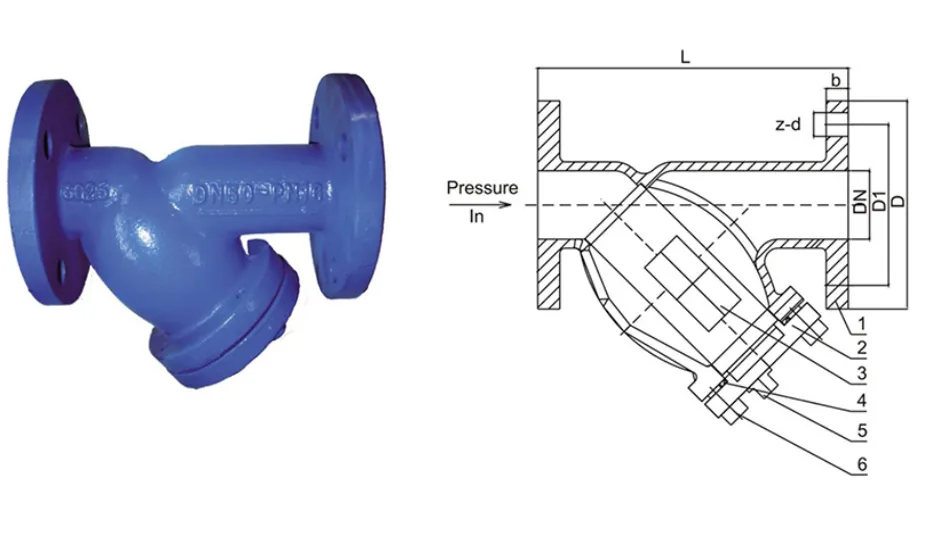ડીસેમ્બર . 29, 2024 01:21 Back to list
floating ball check valve
The Floating Ball Check Valve A Crucial Component in Fluid Control Systems
In the world of fluid mechanics, check valves serve a critical role in controlling the flow of liquids and gases. Among these, the floating ball check valve stands out due to its unique design and functionality. This article will explore the construction, operation, advantages, and applications of the floating ball check valve, emphasizing its importance in various industries.
Construction and Operation
The floating ball check valve consists of a valve body, a spherical ball, and a seal. The valve body houses the flow passage and is typically made from materials such as PVC, stainless steel, or cast iron, depending on the chemical environment and pressure needs. The ball, usually made of plastic or metal, is free to move within the valve body and serves as the primary sealing element.
When the fluid flows in the desired direction, the ball is pushed away from the seat, allowing fluid to pass through. However, if the flow reverses, the ball moves back toward the seat due to gravity or the pressure of the fluid, effectively sealing the passage and preventing backflow. This design ensures that the system remains efficient and minimizes the risk of contamination.
Advantages of Floating Ball Check Valves
One of the most significant advantages of floating ball check valves is their simplicity and reliability. With fewer moving parts than other types of check valves, they have a lower chance of failure and require less maintenance. Additionally, their straightforward design allows for easy installation, as they can be oriented in any direction.
floating ball check valve

Another benefit is their ability to handle a wide range of flow rates and pressures. Floating ball check valves can be found in various sizes, making them suitable for both small residential plumbing systems and large industrial applications. Moreover, they are resistant to wear and can manage abrasive flow materials, further extending their service life.
Floating ball check valves also exhibit excellent sealing performance. The ball's ability to conform to the seat allows for effective isolation of backflow, which is particularly important in preventing contamination in systems carrying clean water or pharmaceuticals. This sealing capability improves system efficiency and safety, making these valves essential in many applications.
Applications
Floating ball check valves are utilized in numerous industries, including water and wastewater treatment, chemical processing, power generation, and HVAC systems. In water treatment facilities, they help prevent contamination by ensuring that treated water does not flow back into the supply. In chemical processing, they are essential for managing the flow of hazardous materials, preventing leaks and ensuring safety.
In power generation, these valves play a crucial role in cooling systems and turbine operation, where backflow could disrupt the delicate balance of processes. They are also commonly found in irrigation systems, ponds, and aquariums, where they manage water flow efficiently and prevent backflow that could harm aquatic life or interfere with water quality.
Conclusion
The floating ball check valve is a vital component in fluid control systems, characterized by its unique design and reliable operation. Its ability to prevent backflow, ease of maintenance, and versatility makes it an ideal choice for a diverse range of applications across multiple industries. As the demand for efficient and safe fluid management continues to rise, the significance of the floating ball check valve in modern engineering and infrastructure cannot be overstated. Understanding its functionality and advantages helps engineers and system designers to select the right components for their specific needs, ultimately leading to improved performance and safety in their operations.
Share
-
Reliable Wafer Type Butterfly Valves for Every IndustryNewsJul.25,2025
-
Reliable Flow Control Begins with the Right Ball Check ValveNewsJul.25,2025
-
Precision Flow Control Starts with Quality ValvesNewsJul.25,2025
-
Industrial Flow Control ReliabilityNewsJul.25,2025
-
Engineered for Efficiency Gate Valves That Power Industrial PerformanceNewsJul.25,2025
-
Empowering Infrastructure Through Quality ManufacturingNewsJul.25,2025